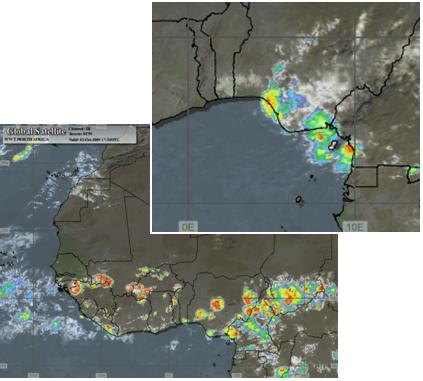Introduction
Offshore operations along the West African coast and other areas of the world are regularly impacted by severe thunderstorm activity. The strong winds from these thunderstorms pose significant risks to equipment and personnel.
In most of these regions weather radar is very sparse and when using onboard radar, offshore operators can only achieve several minutes warning of approaching thunderstorms. The radar identifies the precipitation within the storm, but for dry thunderstorms the radar will be unable to pick up on the approaching weather. It is also extremely difficult to judge the speed of approaching thunderstorms by using only radar.
Solution - Wilkens Weather Squall Line Advisory Service
High resolution satellite photos can be utilized to monitor the development and movement of thunderstorms and squalls. Wilkens Weather receives 2nd generation Meteosat Infrared and Visible Spectrum imagery every 30 minutes. Observations are also taken from local airports to judge the strength of thunderstorms passing through an area. Once developing thunderstorm activity is identified, a statement as to the location of the thunderstorm, the direction of movement, and anticipated time of arrival is issued. This unique thunderstorm forecast service can provide in many cases over 8 hours warning of approaching thunderstorm activity, allowing operators to take the necessary avoidance measures.

Squall Line Advisory Service takes the form of a twice daily email with text discussion with an attached High Resolution Infrared satellite image. The satellite image is then annotated to show key features. Updates and warnings are issued as frequently as necessary with attached images.

